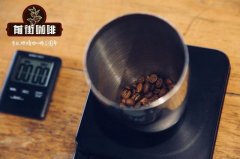Development of Ethiopian Coffee characteristics of Ethiopian Coffee

Professional coffee knowledge exchange More coffee bean information Please pay attention to coffee workshop (Weixin Official Accounts cafe_style)
Coffee from Africa and Arabia: Ethiopia
Coffee was originally developed as a commercial crop in Yemen, but Arabica coffee trees originated in the highlands across the Red Sea in western Ethiopia, where people still harvest wild berries. Today, Ethiopian coffee is one of the most diverse and distinctive coffees in the world, with at least one coffee called Yirgacheffe being the finest.
All coffees exhibit the wine and fruit acidity characteristic of African and Arabica coffee, but Ethiopian coffee has a rich variety of variations on this theme. These variations are partly determined by the processing method. Ethiopian coffee is divided into dry coffee (beans are dried inside the fruit) and complex large-scale wet coffee (the fruit is immediately removed from the beans by a series of complex operations before the beans are dried).
Ethiopian casual dry coffee. In most parts of Ethiopia, dry processing is an informal, standby practice for processing small batches of coffee for local consumption. Everywhere, even a coffee tree, someone plucks the fruit and leaves it outside to dry. I remember driving down a seemingly uninhabited road in western Ethiopia when I suddenly spotted a pavement surrounded by a row of stones to protect a small piece of coffee drying! This informal dry coffee is rarely exported, simply peeled, roasted, drunk on the spot or sold in local markets.
Instead, the best, ripenest coffee fruit is sold to wet processing plants called "washing stations" where it is prepared for export according to the latest methods. Only the remaining, unripe and overripe fruit was left outside to dry, usually not on the road but on raised table-like mats in front of farmers 'clay and huts. This dried coffee may enter the export market, but only as a filler coffee for cheap coffee blends.
Ethiopia dry processes Harrar. In Ethiopia, only Harrar, the famous coffee (usually premium coffee) from the predominantly Muslim province east of the capital Addis Ababa, is an exception to the second-class status of dry processed coffee. In Harrah's, all coffee fruit, including the finest and ripenest, is dried in the sun, including fruit. Usually, fruit can be hung directly from trees to dry. The result is coffee much like Yemeni coffee, wild, fruity, complex sweet, with a slightly fermented aftertaste. This taste shared by Yemenis and Ethiopians is known as mocha and is one of the most unique experiences in the coffee world. For this reason, Harrar is often sold as Mocha or Moka, which adds to the confusion over the misuse of the word. Some retailers refer to both coffees as Ethiopian versions of Moka Harrar. Harrar can be spelled Harari, Harer or Harar.
Yirgacheffe and other wet processing Ethiopia. In 1972, Ethiopia established its first wet coffee processing plant. Thirty years later, in southern and western Ethiopia, more and more coffee is being processed into a complex wet coffee. During the wet treatment, the fruit is immediately removed, which significantly weakens the fruity and wine-like taste of the fruit dry coffee, making it soft, round, delicate, complex, and with floral hints.
In the Yirgacheffe region of southwestern Ethiopia, this is a lush, deep soil and hilly region. Ethiopia's Yirgacheffe is the most distinctive coffee in the world. It tastes mellow and exudes citrus and flower aromas. Other Ethiopian wet-processed coffees-washed Limu, washed Sidamo, washed Jima and others-are typically soft, round, floral and citrus, but not as intense as Yirgacheffe. However, they can also be very refined and unique coffees.
Most Ethiopian coffee is grown without pesticides, but under optimum conditions: grown in shade and crossbred with other crops. The only exception is small amounts of wet coffee produced on large government-run plantations in south-west Ethiopia, which use chemicals carefully. Harrars and Yirgacheffes are what Ethiopians call "garden coffee," grown by villagers on small plots of land in completely traditional ways.
END
Important Notice :
前街咖啡 FrontStreet Coffee has moved to new addredd:
FrontStreet Coffee Address: 315,Donghua East Road,GuangZhou
Tel:020 38364473
- Prev

Brief introduction of Costa Rican Coffee Tarazhu producing area what is the altitude of Costa Rican coffee beans
Professional coffee knowledge exchange more coffee bean information please follow the coffee workshop (Wechat official account cafe_style) front street coffee-Costa Rica Tarazu producing area introduction of coffee from Cuba in 1729, the coffee industry has become an important source of economy in Costa Rica, about 1/3 of the country's people are engaged in coffee-related industries. Most of the coffee
- Next

Taste of Costa Rican coffee black honey introduction to the characteristics of Costa Rica black honey
Professional coffee knowledge exchange more coffee bean information please follow the coffee workshop (Wechat official account cafe_style) Qianjie Coffee-Costa Rican Stonehenge Manor Black Honey treatment introduction most of the world's coffee farms may be based on local place names or customs, Stonehenge Manor is naturally an example, Stonehenge Manor from
Related
- Beginners will see the "Coffee pull flower" guide!
- What is the difference between ice blog purified milk and ordinary milk coffee?
- Why is the Philippines the largest producer of crops in Liberia?
- For coffee extraction, should the fine powder be retained?
- How does extracted espresso fill pressed powder? How much strength does it take to press the powder?
- How to make jasmine cold extract coffee? Is the jasmine + latte good?
- Will this little toy really make the coffee taste better? How does Lily Drip affect coffee extraction?
- Will the action of slapping the filter cup also affect coffee extraction?
- What's the difference between powder-to-water ratio and powder-to-liquid ratio?
- What is the Ethiopian local species? What does it have to do with Heirloom native species?

